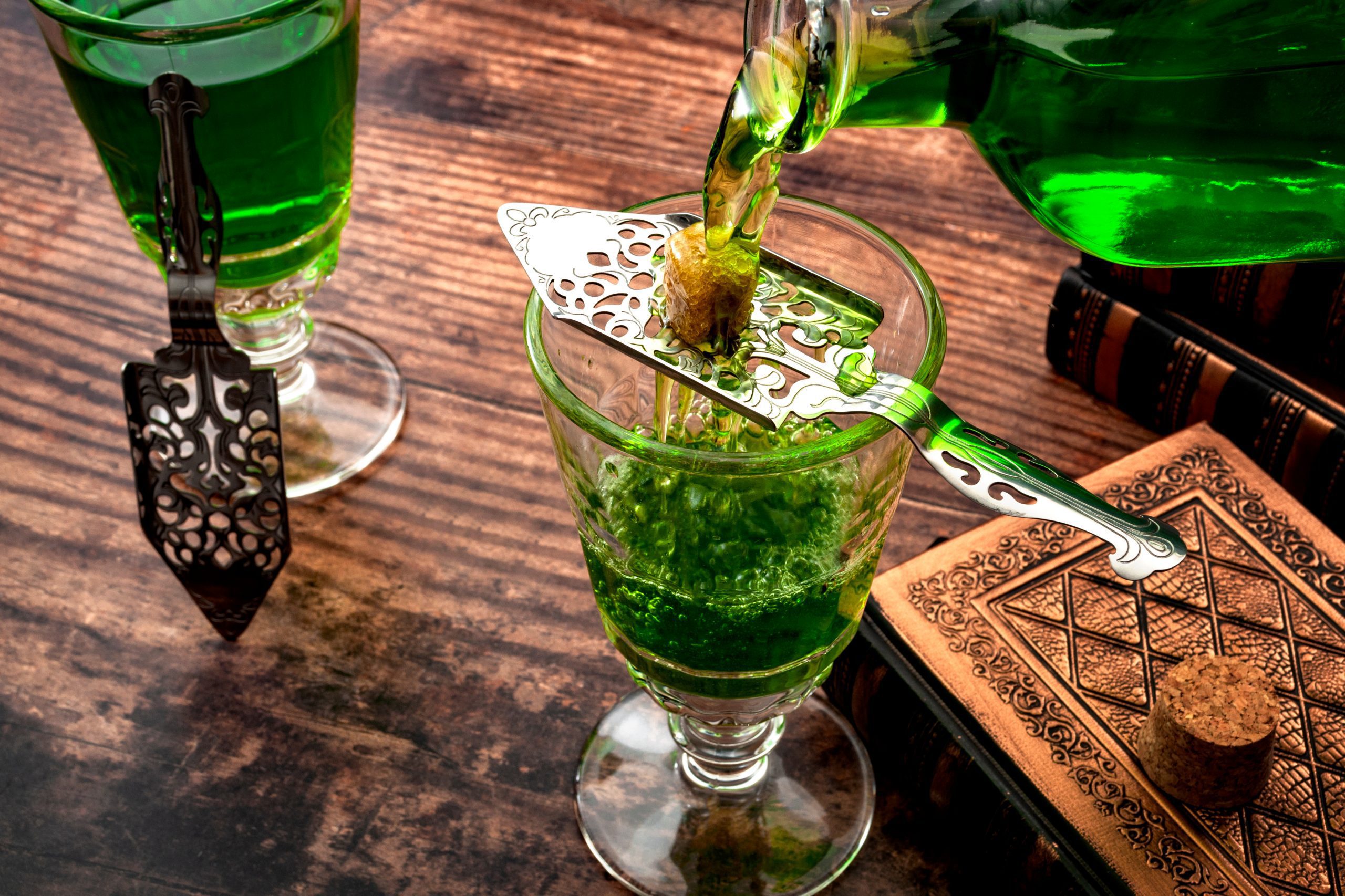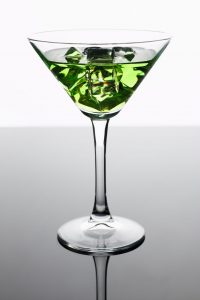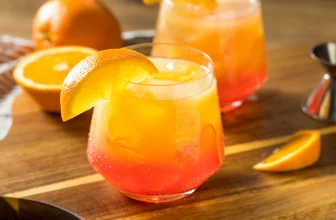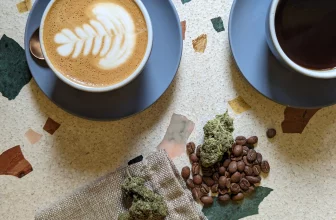
Few liquors carry the reputation of absinthe. By the rumors, it almost sounds like some sort of spirit-meets-psychedelic experience involving hallucinations and green fairies.
Today, we set the record straight.
What Is Absinthe?
Absinthe is a strong liquor made by distilling an alcoholic drink with botanical flavors like fennel, anise, wormwood, and other varieties of herbs. This creates the drink’s characteristic licorice bite.
You’ll find two main absinthe styles out there: the Czech or Bohemian style and the Swiss/French style.
The Czech or Bohemian style of absinthe is typically spelled without an “e” at the end. Its distillation process is similar to that of whiskey or vodka. Distillers mix in a base of alcohol with sugar, color, and flavorings to obtain a type of liqueur. Is it true absinthe? Meh. Maybe. (Mehbe.) But it sure is delicious, it’s more affordable, and it’s readily available at bars and stores!
That brings us to the Swiss/French style of absinthe, which hails from the French-speaking western border of Switzerland. With this method, alcohol is slowly distilled with botanicals (including the star of anise), then color is added when the distillation is nearly complete. Further herbs may also be added at this time.
A note on the color of Swiss/French absinthe: There is a peculiar cloudy whiteness to this drink, known as a “louche,” that stems from anise oils. Oils and water don’t readily mix, so those oils from the anise become suspended in the absinthe, creating a lovely, swirling louche.
History of Absinthe
Absinthe was not always such a naughty drink. That reputation came about in the early 1900s when a Frenchman named Jean Lanfray allegedly murdered his family after a day of binge drinking. Supposedly, he had started the morning with two shots of absinthe but had filled the day with many glasses of strong wine, spiked coffee, and more wine.
Perhaps unable to fathom this violent tragedy and eager for a scapegoat, the village folk pointed their trembling fingers at the obvious culprit: absinthe! This episode was dubbed “the absinthe murder” and quickly spread across Europe, solidifying what had been a growing tide of anti-absinthian sentiments.
Though the case against absinthe was doubtful (while the case against Lanfray was certain — he was found guilty on all counts), the fervor did not die down. Within several years, absinthe was illegal in Switzerland; by 1912, it was illegal in the U.S; and by 1915, it was illegal in France.
What caused this to happen? A lot of things, probably. There were economic interests involved. Pseudoscience was rife. And worldwide, people sensed the world was changing — and absinthe seemed to be a harbinger of it all.
But it was not always so.
Modern History
In ancient Greece and Rome, a form of absinthe was used medicinally to aid childbirth. Soaking wormwood in spirits was the common recipe. In 1597, a British herbalist wrote that wormwood “voideth away the worms of the guts.”
Absinthe’s role as an alcoholic indulgence began in the 1800s with France’s conquest of Algeria. The soldiers, suffering from dysentery and fever, took to soaking wormwood in their wine. When they returned home, they found they had rather taken a liking to the drink and began ordering “a green” at the local bars.
Its momentum was, well, momentous. Soon, absinthe was the liquor of choice for everyone from peasants to princes, literary geniuses to famous painters. Hemingway enjoyed a dash of absinthe here and there, claiming it gave him new ideas. All in all, its popularity was a Beatles-like revolution that at once excited and threatened the old guard.
It took until the 21st century for absinthe to really gain ground again. Switzerland began allowing it again only in 2005. France still only allows drinks labeled “absinthe” to be exported; locals must drink a beverage of a different name. The U.S. even has some complicated laws around it.
But the summary is this: absinthe is back, baby.
Absinthe Cocktail Recipe
1
servings1
minute1
minute163
kcal2
minutesTo understand what absinthe is capable of, start simple with a Death in the Afternoon cocktail. This fantastically refreshing drink has just two ingredients and puts a smile on your face with bubbly goodness.
Ingredients
1.5 fl. oz. absinthe
4.5 fl. oz. chilled Champagne
1 coupe glass
Instructions
- Simply, add the absinthe to a coupe glass.
- Slowly pour the champagne in.
- Mix gently with a cocktail spoon and enjoy.
Notes
- Strain pairing recommendations: White Rhino, Platinum Kush
Absinthe FAQs
Is absinthe poisonous?
No — at least not due to any ingredient other than alcohol (alcohol poisoning is no joke, folks). Though toxicity was an oft-recorded problem with absinthe, it was most likely due to a lack of regulations. This could have introduced poisons like antimony, copper sulfate, or chloride into the drink.
But the most likely culprit was simply people drinking too much absinthe.
Can absinthe make you hallucinate?
No, no, no, emphatically, no. A 19th-century psychiatrist (19th-century psychiatry was not exactly the high point of scientific rigor) claimed that hallucinations were a side effect of absinthe and that thujone was at the root of it.
Any supposed hallucinations from the time are now thought to be due to impure ingredients, alcohol withdrawal, or overdrinking.







